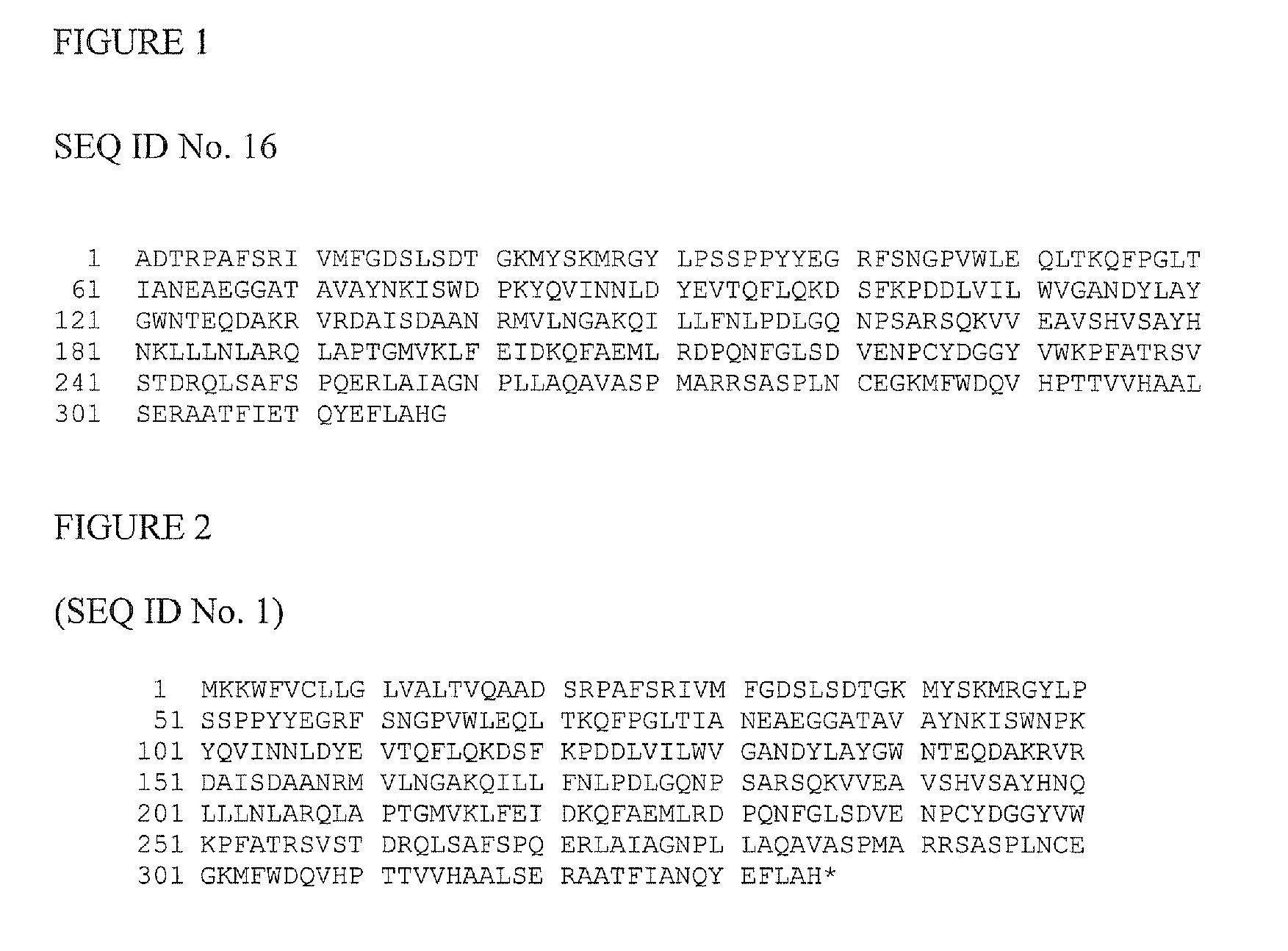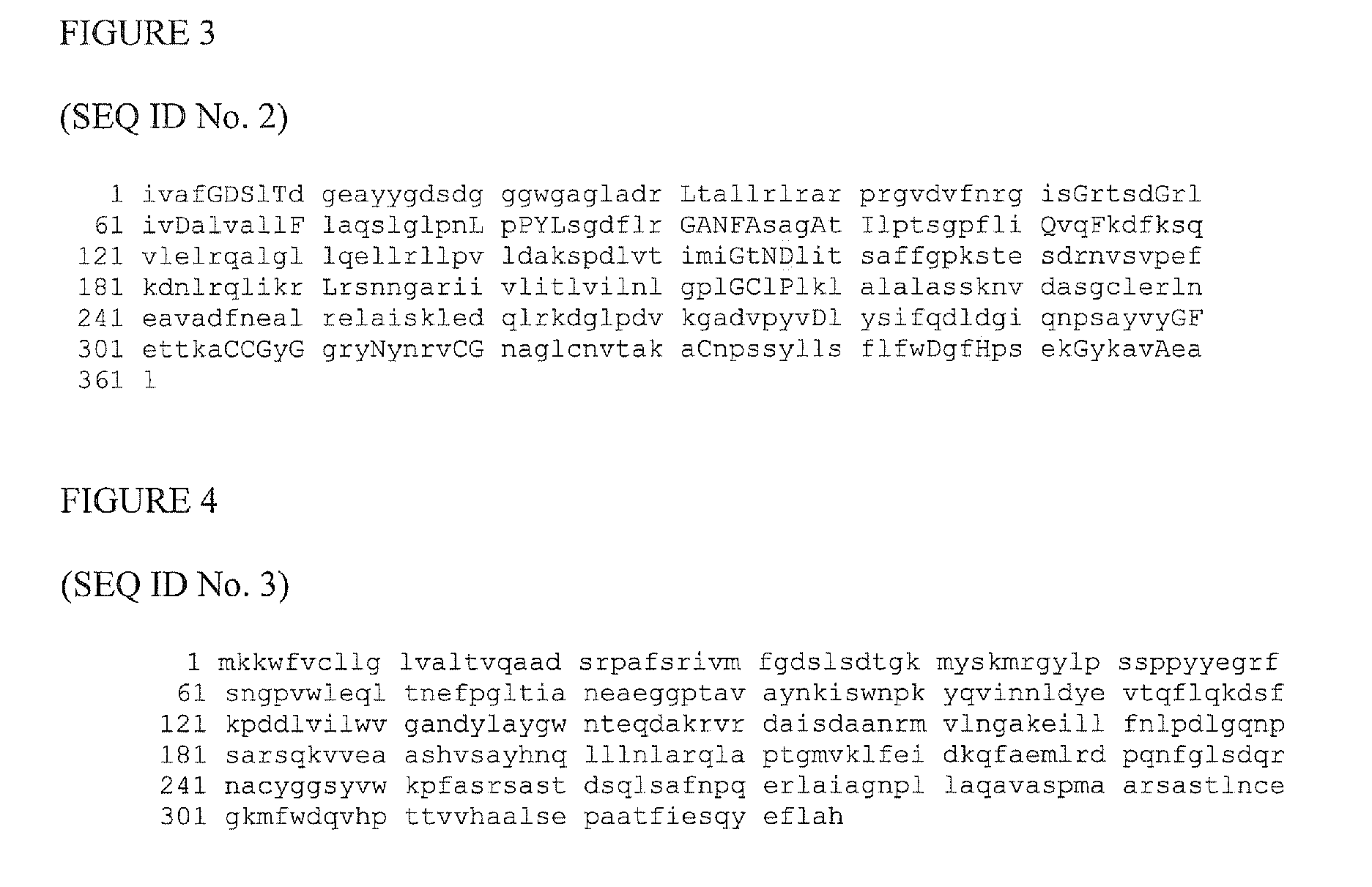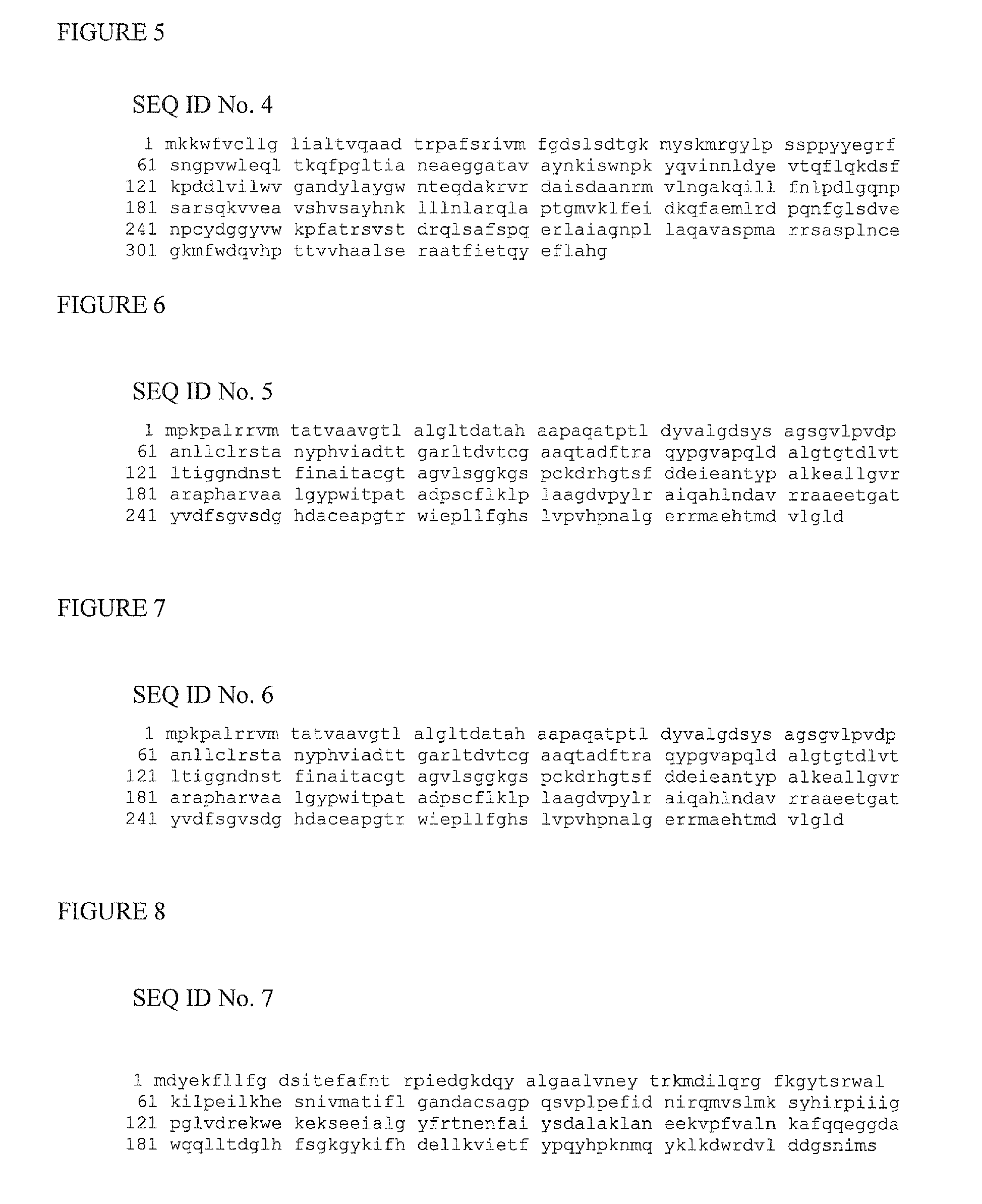Method
a technology of powder milk and enzyme, which is applied in the direction of growth factor/regulator receptors, animal/human proteins, enzymes, etc., can solve the problems of affecting the quality of milk powder, affecting the taste of milk powder, so as to improve the flowability and rehydration properties, reduce cholesterol content, and reduce the free fatty acid content
- Summary
- Abstract
- Description
- Claims
- Application Information
AI Technical Summary
Benefits of technology
Problems solved by technology
Method used
Image
Examples
example 1
Expression of KLM3′ in Bacillus licheniformis
[0759]A nucleotide sequence (SEQ ID No. 49) encoding a lipid acyltransferase (SEQ. ID No. 16, hereinafter KLM3′) was expressed in Bacillus licheniformis as a fusion protein with the signal peptide of B. licheniformis α-amylase (LAT) (see FIGS. 53 and 54). For optimal expression in Bacillus, a codon optimized gene construct (no. 052907) was ordered at Geneart (Geneart AG, Regensburg, Germany).
[0760]Construct no. 052907 contains an incomplete LAT promoter (only the −10 sequence) in front of the LAT-KLM3′ precursor gene and the LAT transcription (Tlat) downstream of the LAT-KLM3′ precursor gene (see FIGS. 53 and 55). To create a XhoI fragment that contains the LAT-KLM3′ precursor gene flanked by the complete LAT promoter at the 5′ end and the LAT terminator at the 3′ end, a PCR (polymerase chain reaction) amplification was performed with the primers Plat5XhoI_FW and EBS2XhoI_RV and gene construct 052907 as template.
Plat5Xhol_FW:ccccgctcgagg...
example 2
Enzymation Test
[0774]In the trials described below, the moisture content, wetting time and cholesterol and cholesterol ester levels of milk powder formed by spray drying 25 litres of standard whole milk which had been treated with an enzyme for 30 minutes and 4 hours (as described below) were compared with milk powder formed by feeding 25 litres of standard whole milk directly to the spray drying tower (referred to below as the control sample).
Enzyme Treatment of Whole Milk from ARLA
[0775]20 litres of whole milk was heated to 40° C. and 76 μl of a solution solution of the enzyme of SEQ ID No. 16 (hereinafter KLM3′), (KTP08015, 1300 TIPU / g milk, corresponding to 12.4 mg enzyme / g milk) was added.
[0776]Mixing was continued for 38 minutes to ensure homogeneity, and the treated milk was then divided into 2 lots. Lot 1 was pumped to the spray tower immediately; lot 2 was pumped to the spray tower 4 hours after adding the enzyme.
[0777]The parameters used for operation of the pilot plant sp...
example 3
Wettability Test
[0790]The milk powders derived from Example 2 were tested for wettability in accordance with IDF method 87:1979 with due consideration to the fact that method is intended for testing instantized milk powders, whereas the powders made from the pilot plant dryer is a non-instantized and non agglomerated powder. The apparatus used is illustrated in FIG. 76.
[0791]The results are shown in Table 4 below.
[0792]Powder characteristics show that the powder made from enzymated milk is more free-flowing and has slightly lower tendency for lumping.
TABLE 4SampleWetting timeControl>10 minutes in all 3 repeat testsEnzyme treated lot 11st repeat test 403 s;2nd repeat test 394 s;average wetting time 399 s.Enzyme treated lot 21st repeat test 320 s;2nd repeat test 309 s;average wetting time 315 s.
PUM
 Login to View More
Login to View More Abstract
Description
Claims
Application Information
 Login to View More
Login to View More - R&D Engineer
- R&D Manager
- IP Professional
- Industry Leading Data Capabilities
- Powerful AI technology
- Patent DNA Extraction
Browse by: Latest US Patents, China's latest patents, Technical Efficacy Thesaurus, Application Domain, Technology Topic, Popular Technical Reports.
© 2024 PatSnap. All rights reserved.Legal|Privacy policy|Modern Slavery Act Transparency Statement|Sitemap|About US| Contact US: help@patsnap.com










